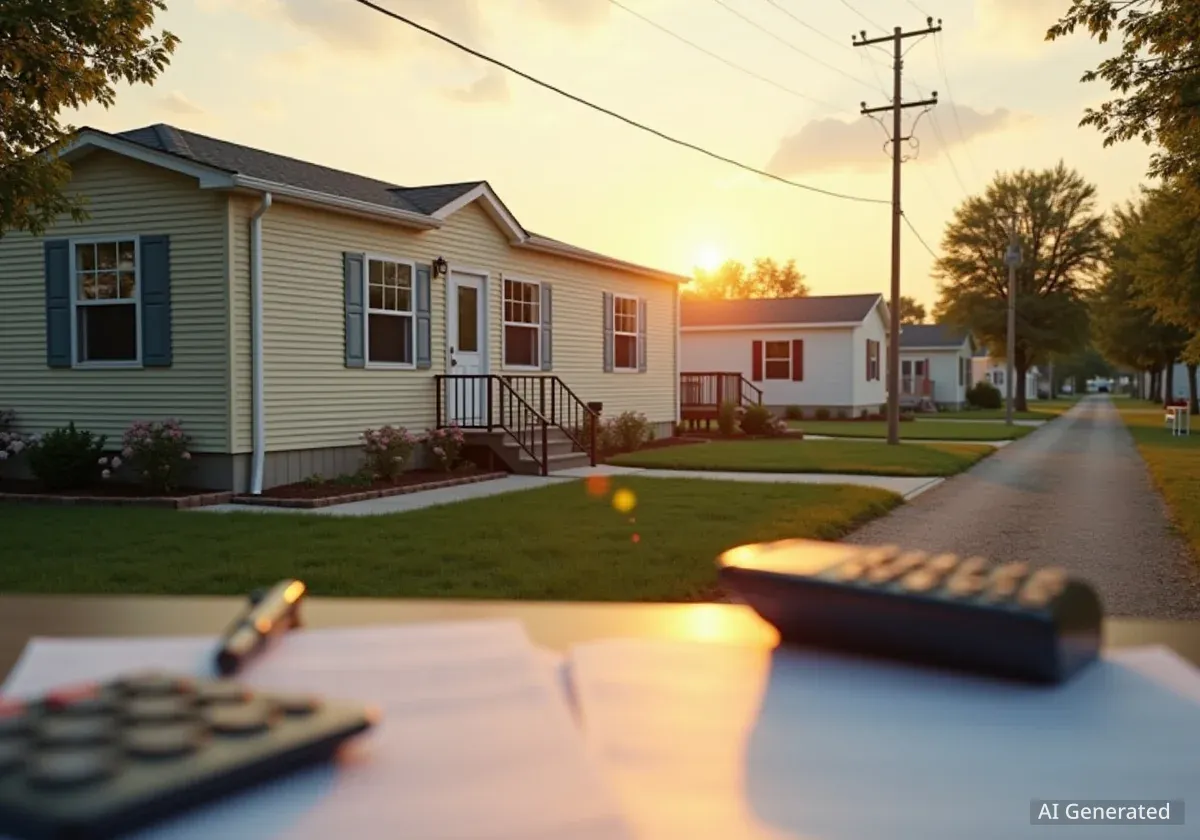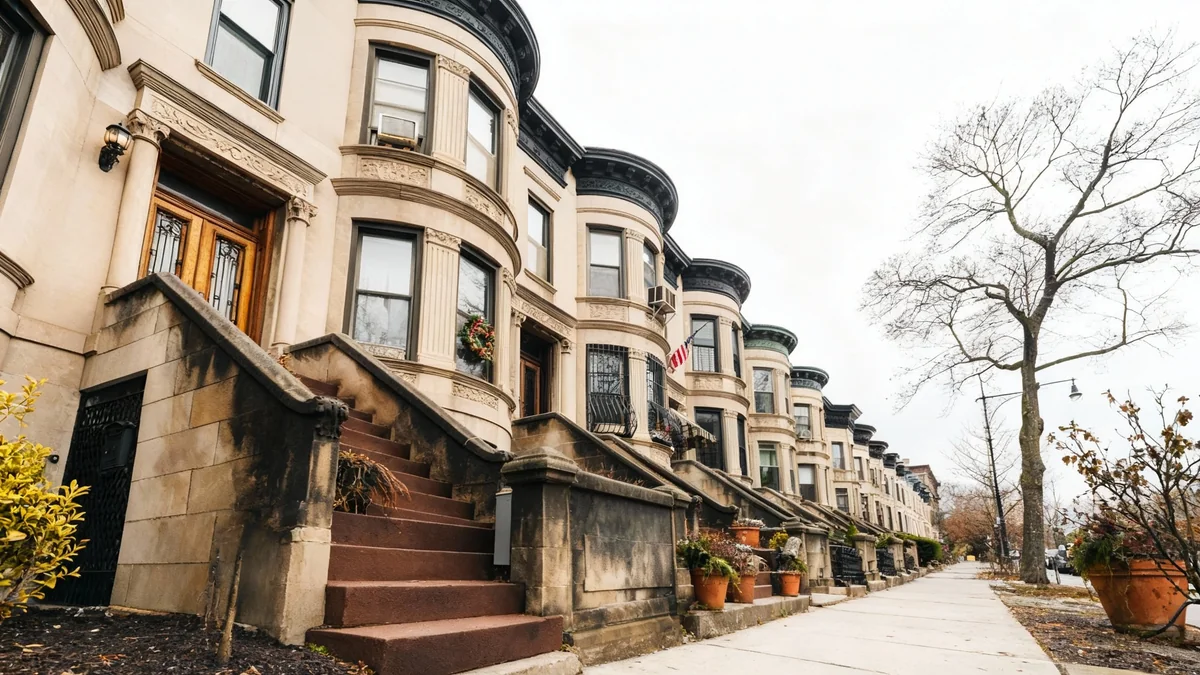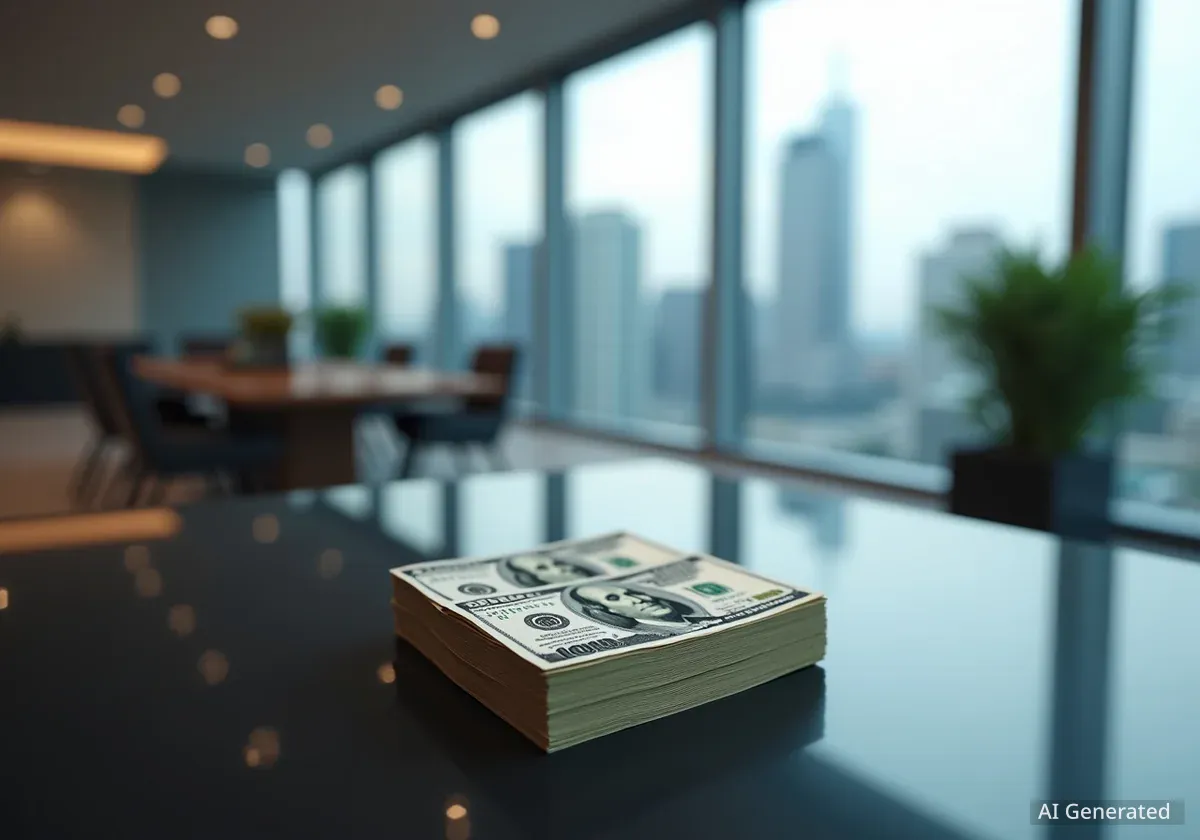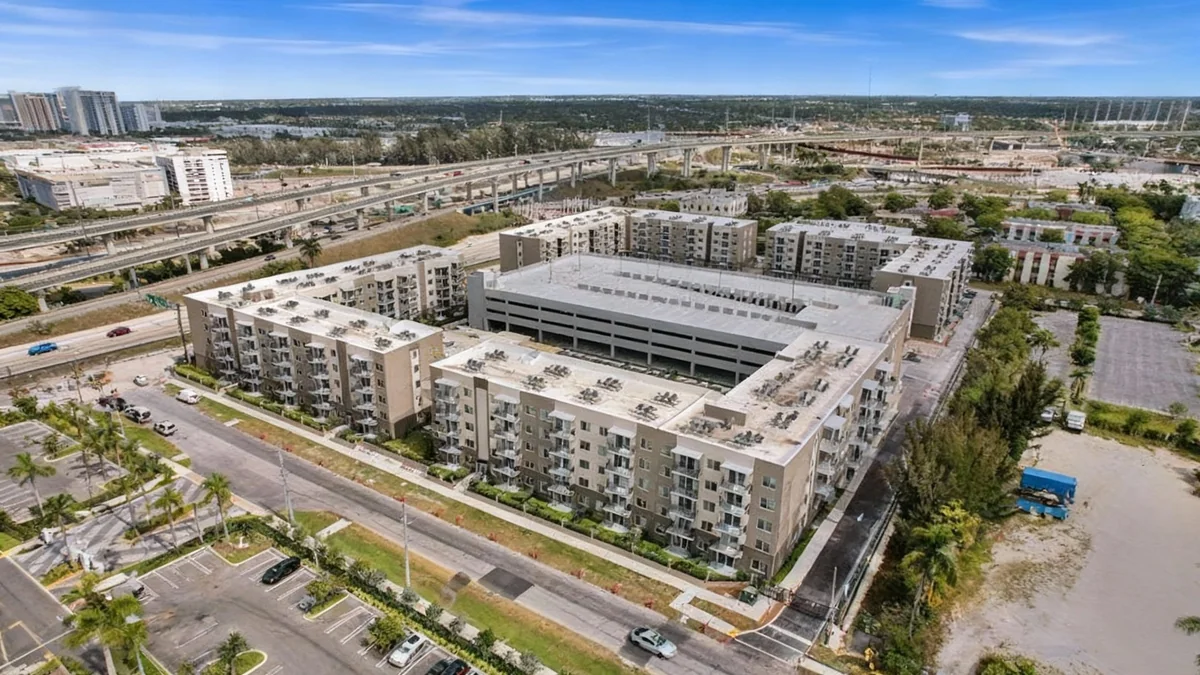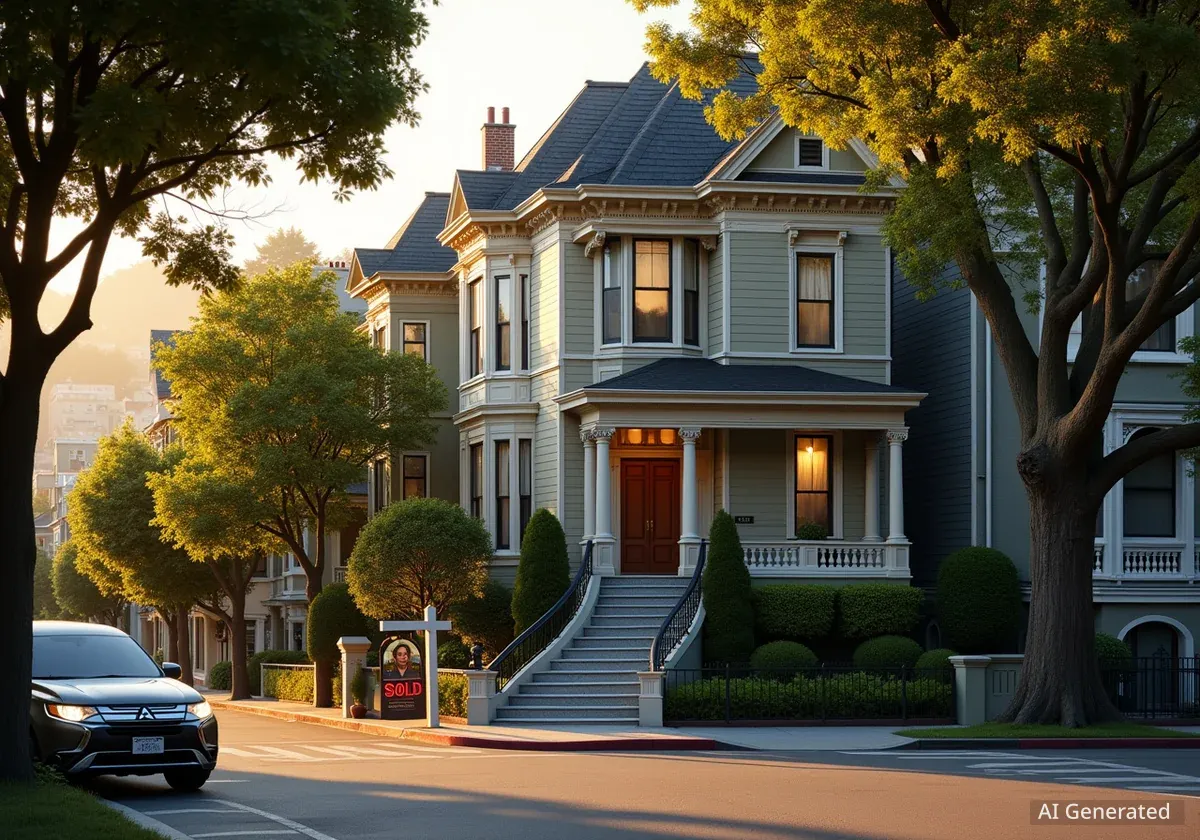A real estate investment in Northwest Georgia has yielded a significant return, demonstrating the potential of manufactured housing. Investors Joey and Ashley English recently detailed a property transaction that resulted in a total profit of over $140,000 from a single doublewide mobile home acquired in 2018.
The property, purchased for $21,500, generated substantial rental income over nearly six years before being sold. The final numbers show a net cash flow of $36,000 from rent and a $104,000 profit from the sale, highlighting a successful long-term investment strategy.
Key Takeaways
- A doublewide mobile home on 1.3 acres was purchased for $21,500 in late 2018.
- The property generated $64,000 in rental income over a nearly six-year period.
- After all expenses, the investment produced $36,000 in net rental cash flow.
- The property was sold in 2025, yielding an additional profit of $104,000.
- The total return on the investment, combining cash flow and sale profit, exceeded $140,000.
The Initial Acquisition and Renovation
In late 2018, real estate investors Joey and Ashley English acquired a doublewide mobile home situated on 1.3 acres in Northwest Georgia. According to a case study presented by the investors, the property was purchased for $21,500 cash.
The seller, a widow, contacted the investors after seeing one of their signs. Her motivation to sell was to create distance from adult children who were depleting her financial resources. This circumstance allowed for a quick, off-market transaction.
The property's value was affected by its classification at the time. Because the doublewide was not permanently affixed to the land, it was considered a trailer rather than a traditional house, which lowered its market valuation. This classification, combined with the pre-COVID market conditions of 2018, contributed to the low purchase price.
First Phase of Improvements
Immediately following the purchase, the investors began an initial renovation to prepare the property for tenants. This first phase of work cost approximately $10,300.
The rehab included essential updates such as new paint and floor coverings. The team also addressed a plumbing leak, replaced the water heater, and removed an existing fireplace to modernize the interior space. By March 2019, the property was ready for the rental market.
Initial Investment Breakdown
- Purchase Price (2018): $21,500
- Initial Renovation Cost: $10,300
- Total Initial Capital Outlay: $31,800
A Profitable Six-Year Rental Period
The newly renovated property was listed for rent and quickly secured tenants at a rate of $850 per month, which was the standard market rate for a three-bedroom home in the area at the time. This tenancy proved to be remarkably stable.
The same tenants remained in the home from March 2019 until November 2024, a period of five years and eight months. A nearly six-year tenancy is considered highly successful in the rental industry, as it minimizes turnover costs and vacancy periods.
Analyzing the Rental Cash Flow
Over the course of the tenancy, the property generated significant income. The investors reported a total of $64,000 in gross rental income. During this same period, the total operating expenses, including maintenance, taxes, and insurance, amounted to $28,000.
This resulted in a net cash flow of $36,000 from rental operations alone. When averaged over the 68-month tenancy, this equates to approximately $529 per month in positive cash flow, a strong return on the initial $31,800 investment.
The Decision to Sell
After the long-term tenants moved out in late 2024, the investors faced a strategic decision: re-rent the property or sell it. A key factor was the property's location on the periphery of their primary service area. To streamline their portfolio management, they prefer to keep rentals in areas they frequent regularly. This logistical consideration led them to prepare the house for sale.
Preparing for Sale and Final Profit
To maximize the property's market value, a second phase of renovations was undertaken. This work focused on both cosmetic updates and crucial structural changes needed to reclassify the home for financing purposes.
Interior updates included fresh paint, new floor coverings, and modern countertops. The HVAC system was serviced and the septic tank was pumped to ensure all systems were in good working order. A new 6x6 foot back porch was also constructed.
Upgrading to a Permanent Foundation
The most significant and value-adding expense was permanently affixing the home to the foundation. This process is critical for buyers seeking traditional mortgage financing, as lenders have strict requirements under HUD guidelines.
A masonry company was hired to treat the support piers with bonding cement. The trailer tongues were removed from underneath the structure, and new plastic vapor barriers were installed. This work legally converted the property from a mobile home on land to a permanent residential structure, significantly increasing its appeal and value.
For the exterior skirting, the investors opted for a cost-effective solution using metal roofing material, which met HUD guidelines at less than half the cost of a traditional block or stucco finish. The total cost for this final round of renovations was approximately $26,200.
Final Financial Summary
- Total Rental Income: $64,000
- Total Rental Expenses: $28,000
- Net Rental Cash Flow: $36,000
- Profit on Sale (after all costs): $104,000
- Total Net Profit (Cash Flow + Sale): $140,000
The Final Sale and Investment Outcome
With all renovations complete, the property was listed on the market and quickly went under contract. The sale of the property generated a net profit of $104,000 after accounting for the original purchase price and the costs of both renovation phases.
When combined with the $36,000 in net cash flow earned during the rental period, the total profit from this single investment reached $140,000. This case study illustrates how a strategic approach to acquiring, managing, and improving manufactured housing can lead to substantial financial returns for real estate investors.

